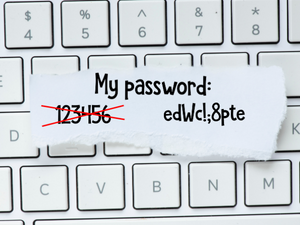 Having a password for online accounts is not enough protection. Hackers and cybercriminals have found a way to crack passwords and hijack emails, bank accounts, social media pages, and other digital real estate. Through password mass attacks, cyber threat actors no longer have to spend a long time trying to guess your online credentials.
Having a password for online accounts is not enough protection. Hackers and cybercriminals have found a way to crack passwords and hijack emails, bank accounts, social media pages, and other digital real estate. Through password mass attacks, cyber threat actors no longer have to spend a long time trying to guess your online credentials.
Understanding a Password Mass Attack
A password mask attack is a technique cybercriminals use to crack passwords. While a
conventional brute-force attack tries to guess your password by entering every possible letter, number, and symbol combination, a mask attack is more targeted and takes less time. It is also more systematic.
With a mask attack, cybercriminals check passwords for a specific pattern. Knowing this pattern allows them to skip character combinations that are not necessary.
Threat actors will use information about your password creation behavior, including your
composition patterns. They will then start cracking a subset of your password's format or entire length.
How Does a Password Mask Attack Work?
Websites and online apps do not store their users' passwords verbatim. Instead, they use a process called hashing. Hashing uses an encryption algorithm to turn passwords and other data into a string of letters and numbers.
Hashing improves the security of your password. So, if attackers hack a website, they won't be able to access your password as is. Instead, they will get the encrypted "hash" that the algorithm had created.
If cybercriminals get a hold of password hashes from a site, they can start a password mask attack. They will put the character combinations into a hashing function and wait until they get valid hits or until it creates a hash that matches yours. These cybercriminals can calculate hashes for common words and often-used combinations.
Cybercriminals don't crack each password within the data set they obtained from a website. They only need to crack enough passwords to get an initial foothold on the website and go deeper into their attack.
How to Prevent Password Mask Attacks
It is important for businesses with websites to take steps to prevent password mask attacks. Their websites must encourage customers or individual users to create strong passwords. Strong passwords contain a combination of uppercase and lowercase letters, numbers, and special characters. With stronger passwords, cybercriminals would find it hard to guess the patterns and calculate hashes.
Businesses and organizations with websites can also use password managers. These tools help prevent network security threats by storing and managing users' credentials. Moreover, they address password security issues like weak passwords and password reuse.
The Bottom Line: Protect Business Sites and Customers From Mask Attacks
Password mask attacks on a business website put customer data at risk. Once cybercriminals crack passwords, they can also extract personal data and use them to access bank accounts. Or they can launch smaller attacks targeted at individuals. Customers will lose confidence in a business if this happens. A mask attack can also disrupt business operations. As such, businesses should encourage their users to create strong passwords. They should also use password managers to protect passwords and customer credentials.


